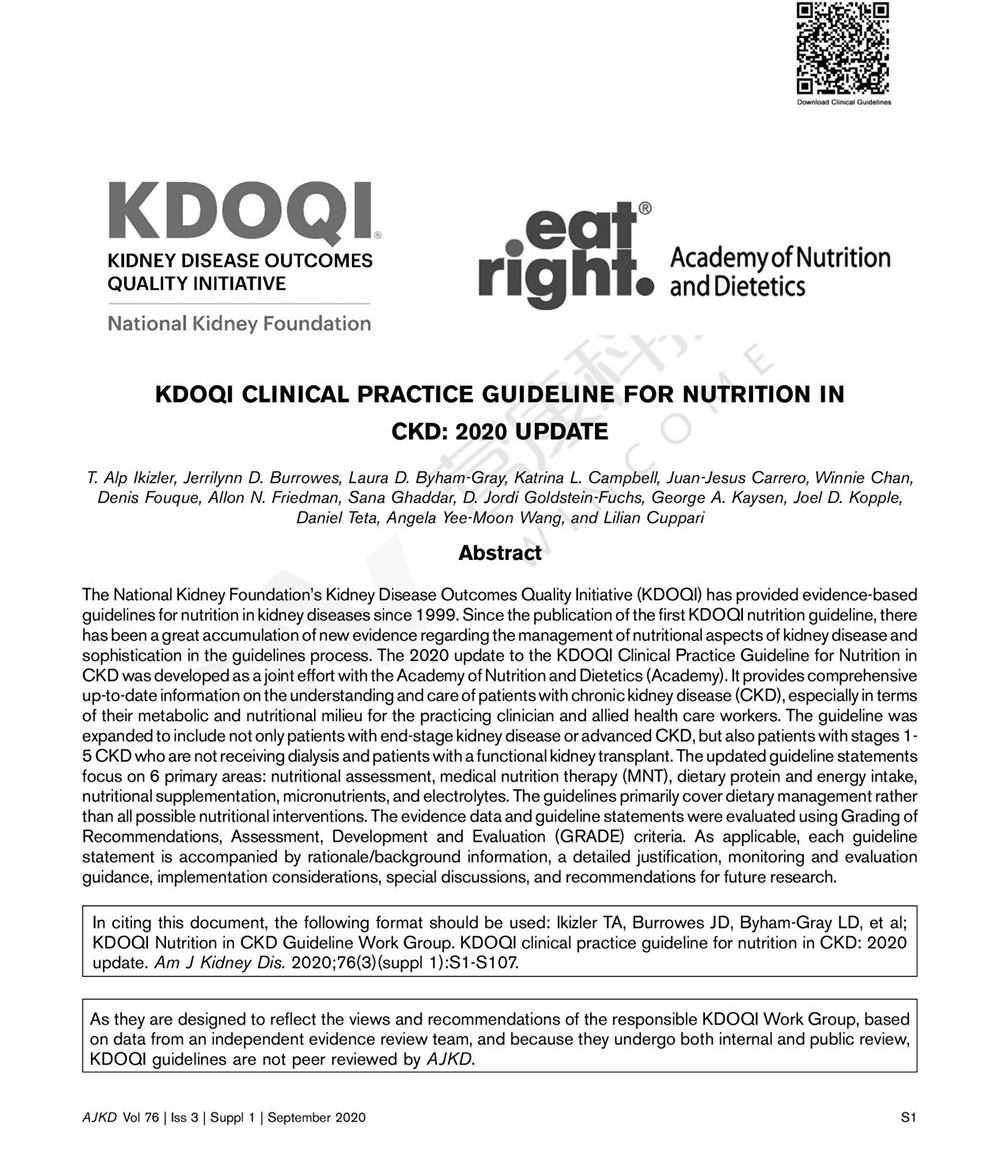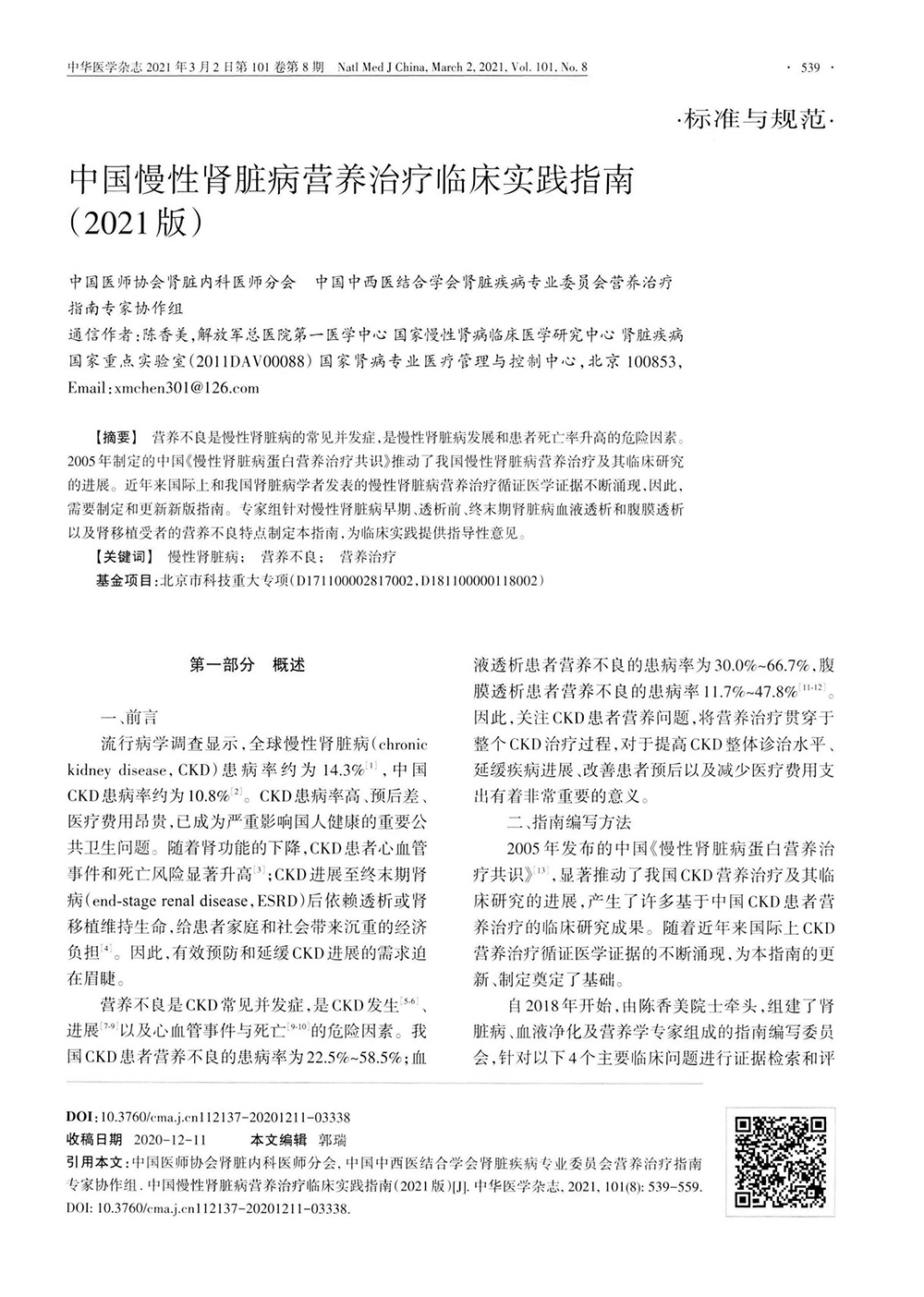Challenges and nutritional requirements of kidney disease
During the development of kidney disease, the body's needs and utilization of different nutrients are always changing, such as at different stages of the disease, whether the patient is already on or about to receive dialysis treatment, etc. Inappropriate nutritional intake often increases the burden on the kidneys and worsens the disease. This means that patients need to constantly adjust their diet and nutritional needs as their disease continues to change, which is actually difficult to do on an individual basis.






Nutritional Support for Kidney Disease Patients
The 2020 U.S. Kidney Disease and Dialysis Patient Survival Quality Guidelines (KDOQI) updated the Clinical Practice Guideline: Nutrition for Patients with Chronic Kidney Disease to provide guidance in six key areas.
Medical Nutrition Therapy (MNT)
Dietary protein and energy intake
Nutritional supplementation
Micronutrients
Electrolytes
Advantages of kidney disease-specific formula
Through the rational design of protein sources and intake, the use of a variety of lipids as the main source of energy intake, strict control of sodium, potassium, phosphorus and other trace elements intake, systematically reduce the metabolic burden on the kidneys on the basis of ensuring that patients receive an adequate supply of nutrients, providing the basis for better treatment results. Kidney disease-specific formulas can provide
Precise intakes of sodium, potassium, phosphorus and calcium
Protein with high digestibility and absorption
Essential polyunsaturated fatty acids (PUFA) for the body
Monounsaturated fatty acids (SUFA)
Rich lipids with immune components
Lipid components are effective in providing energy to the body while also providing assistance to the body in controlling inflammation. Numerous studies have shown that n-3 fatty acids with a reasonable ratio of n-3:n-6 fatty acids have significant immune functions, helping to improve cellular and humoral immune indicators and reducing the risk of kidney inflammation and other inflammatory conditions caused by infection.
Bone related nutrients
Reduced calcium absorption due to kidney injury and reduced calcium deposition due to reduced activity result in significantly lower bone mineral density in patients with kidney disease than in normals, increasing the risk of osteoporosis or fracture. One study showed that the overall incidence of hip fracture in patients with chronic renal failure was 17.4 times higher than in the healthier population, with 58.5% having reduced bone mass and a mortality rate of 64% one year after a concurrent hip fracture. Considering that excessive calcium intake also increases the therapeutic risk of patients with blood calcium disorders, the occurrence of skeletal-related complications can be reduced by controlling calcium intake and improving calcium absorption and deposition by the body through vitamins.
Conclusion
Due to the long duration of the disease, the irreversibility of the damage and the strong correlation with the body's metabolism, the nutritional intake of patients with kidney disease needs to be extraordinarily precise. On the basis of precise nutrition, providing a variety of formulas suitable for different disease stages and treatments can guide the body to maintain a long-term benign metabolic state and reduce the physical and mental burden of patients.
【1】中国慢性肾脏病营养治疗临床实践指南(2021版)[J].中华医学杂志,2021,101(08):539-559.
【2】Fiaccadori Enrico,Sabatino Alice,Barazzoni Rocco,Carrero Juan Jesus,Cupisti Adamasco,De Waele Elisabeth,Jonckheer Joop,Singer Pierre,Cuerda Cristina. ESPEN guideline on clinical nutrition in hospitalized patients with acute or chronic kidney disease[J]. Clinical Nutrition,2021,40(4).
【3】N. Cano,E. Fiaccadori,P. Tesinsky,G. Toigo,W. Druml,M. Kuhlmann,H. Mann,W.H. Hörl. ESPEN Guidelines on Enteral Nutrition: Adult Renal Failure[J]. Clinical Nutrition,2006,25(2).
 Consult us
Consult us